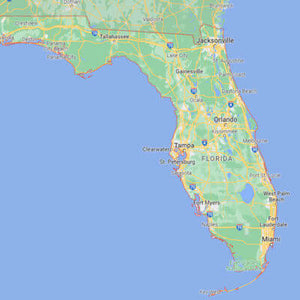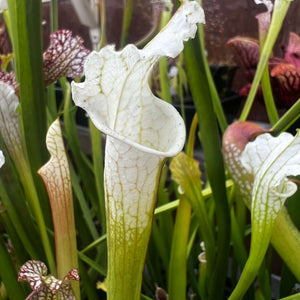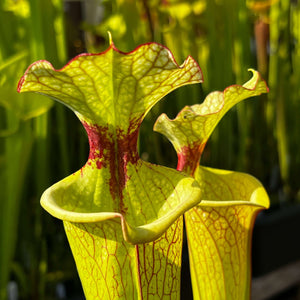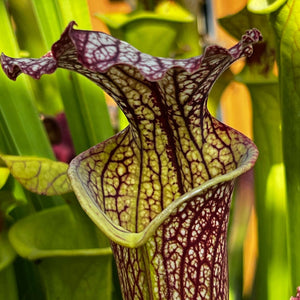Description of Iris sibirica - White
Iris sibirica 'White', often called the Siberian Flag Iris, is a hardy perennial plant. It brings a clean, bright look to gardens with damp soil. This plant is a reliable choice for areas near ponds or in borders that hold moisture well.
Appearance and Dimensions
This iris typically reaches 80 to 100 centimetres in height. It spreads to form a clump about 45 to 60 centimetres wide. The flowers are a clear white. You often see a small, soft yellow or green mark at the base of the lower petals. Each flower measures roughly 7 to 10 centimetres across. They appear from late spring into early summer, usually from May to June.
The plant's leaves are narrow and grass-like. They grow in dense, upright clumps that arch over slightly. This foliage adds structure to your garden long after the flowering period ends.
Ideal Growing Conditions
Iris sibirica 'White' performs best in specific conditions. It likes rich soil that stays moist but drains adequately. Loamy or clay-based soils work very well. You can grow it in sandy soil too, but you must water it more often to maintain moisture.
This iris needs regular water, especially during its main growing season. It suits boggy areas and can handle occasional standing water. The goal is to keep the soil damp, not completely waterlogged. For the best flower display, plant it in a spot with full sun. It also tolerates partial shade, which can be helpful in warmer parts of the country.
Plant Care and Propagation
Looking after this iris is simple. Divide the clumps every three to four years, in early spring or late summer. This keeps the plant healthy and encourages more blooms. Replant the new divisions straight away.
You can grow it from seed, but this method takes longer. Seeds sown in autumn in a cold frame often germinate well. Remember that plants grown from seed might not have the same pure white flowers as the parent. For routine care, water the plant to maintain moist soil. Apply a balanced fertiliser in early spring. You can cut off the old flowers to keep things neat. In late autumn or early spring, cut the foliage back to ground level.
Garden Uses and Benefits
This plant has many uses in the garden. It is perfect for the edges of ponds and streams. It also grows well in any damp border. Its form works in naturalised plantings like meadow gardens or woodland margins.
The pure white flowers are excellent for cutting and using in vases indoors. The plant also supports garden wildlife. Bees and butterflies visit the nectar-rich flowers. The dense clumps of leaves offer shelter for small insects. The root system helps to hold soil in place, which is useful on wet slopes or banks.
Key Points to Remember
Iris sibirica 'White' needs consistently moist soil to look its best. Do not plant it in dry, free-draining spots without a plan for extra watering. It is extremely cold-hardy and suits the UK climate. Make sure you give it enough space to grow into its full, clumping shape without being crowded by other plants.

 UK-grown carnivorous plants
UK-grown carnivorous plants



